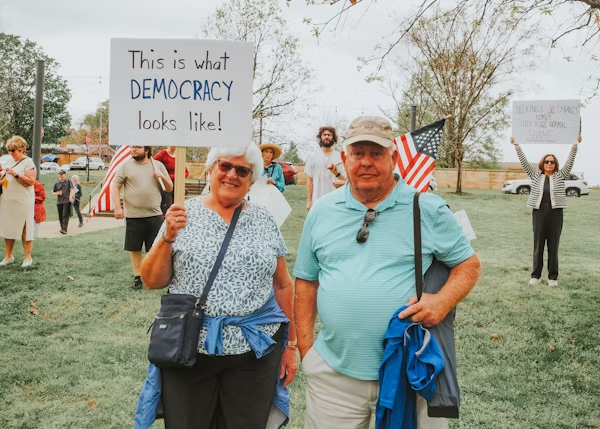On Saturday, thousands of Americans gathered in cities across the country to protest recent decisions made by President Donald Trump. The demonstrations, organized under the banner “50501,” represented 50 protests in 50 states, uniting participants in a nationwide movement. The protests coincided with the 250th anniversary of the American Revolutionary War, a symbolic time for many to voice their frustrations. The protests were held in diverse locations, including city centers, Tesla showrooms, and outside the White House, with attendees expressing dissatisfaction over various issues, including the controversial deportation of Kilmar Ábrego García to El Salvador. Demonstrators called for García’s return, denouncing what they saw as a failure of the current administration.
Signs of Growing National Resistance
Protest actions against the Trump administration have been becoming more frequent and widespread across the United States. Earlier this month, the “Hands Off” protests saw tens of thousands of people rallying in major cities from coast to coast. Despite recent data showing that 45% of voters approve of Trump’s performance in his second term, public support for the president remains lower than historical averages for first-term presidents. According to Gallup, Trump’s approval is still above the 41% approval rating from the same quarter of his first term, but it falls short of the 60% approval typical for new presidents between 1952 and 2020.
Saturday’s protests were directed at a variety of policies, particularly those under the Department of Government Efficiency, an agency focused on reducing federal spending and cutting jobs. Protesters also voiced strong opposition to the administration’s failure to help bring Ábrego García back to the U.S. after his deportation.
Protests Intensify Over Ábrego García’s Deportation
At the White House rally, Gihad Elgendy voiced his anger over García’s deportation, claiming the administration could have pressured the Salvadoran government to facilitate his return. “This is a clear failure of leadership,” Elgendy said. While most protests remained peaceful, tensions flared at one rally. Representative Suhas Subramanyam shared a video on social media showing a man with a Trump sign pushing through the crowd to confront him. The altercation added to the already heated atmosphere surrounding the demonstrations.
Revolutionary Spirit Fuels Protest Movement
Echoing the spirit of America’s founding, many demonstrators carried signs reading “No Kings,” a nod to the nation’s struggle for independence. The phrase was especially prominent in Massachusetts, where protesters commemorated key revolutionary battles while also voicing their discontent with the current government. In Boston, a local “50501” protest merged historical reflection with political dissent, emphasizing the importance of standing up for freedom. Thomas Bassford, attending the protest with his grandsons, explained to reporters that he wanted to teach them a valuable lesson. “Defending freedom often requires us to take to the streets and make our voices heard,” he said.
Declining Public Support for Trump
Public support for President Trump appears to be steadily declining, particularly regarding economic issues. A recent Gallup survey showed that 47% of voters approved of Trump’s performance at the start of the year, but his approval rating has since dropped to 43%. According to a Reuters/Ipsos poll, only 37% of respondents approve of his handling of the economy, down from 42% earlier in the year. The administration’s economic policies and their impact on working Americans continue to be a point of contention for many.
Earlier this month, the country experienced the largest anti-Trump protests since his return to the presidency, with demonstrations occurring in over 1,200 locations across all 50 states. While Saturday’s protests were significant, they were not as widespread as the earlier protests, which mobilized larger crowds across the nation.
The recent wave of protests marks a deepening discontent with the Trump administration and a growing resistance to policies seen as harmful to American citizens. From the deportation of Kilmar Ábrego García to the cuts in federal spending, the nation is seeing an increase in public mobilization, reflecting a broad dissatisfaction with current leadership. With political tensions rising, it remains to be seen how these protests will influence the administration’s approach to policy and public opinion moving forward.
